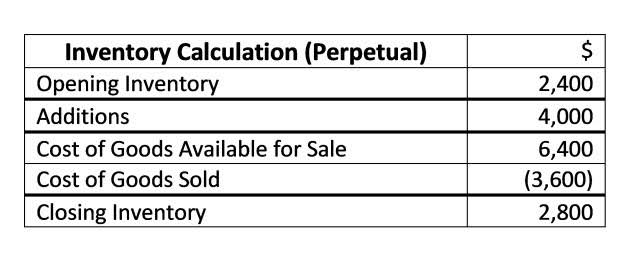
Pro forma financial statements are created for different purposes, depending on the period. Accountants generally define “current” as one year or less and long-term is any time period beyond one year. While they offer valuable insights, projections are estimates, so it’s important to account for potential variability. This type of pro forma projection takes into account all of your financials for the fiscal year up until the present time, then adds projected petty cash outcomes for the remainder of the year.
Common Issues with Using Pro Forma Financial Statements
This provides stakeholders with a clearer understanding of the company’s financial position and helps them make informed decisions. GAAP statements typically include all financial transactions, including one-time events like asset sales or restructuring costs. Pro forma statements, however, often exclude these non-recurring items to provide a clearer picture of ongoing operational performance.
Evaluating Pro Forma Financial Statements: A Comprehensive Guide

These statements facilitate a side-by-side comparison of the financials of both companies before and after the merger or acquisition. These reports are typically used for internal planning purposes, but many companies do issue them to the public for speculative purposes. For instance, management usually talks about the growth financial statements definition of the company in the management discussion and analysis section of the annual report. If their growth projections are based on landing a new client or project, they might include an estimated income statement to show the effects of the new project on the bottom line. A comprehensive risk analysis enables management to make well-informed business decisions and devise contingency plans to minimize the company’s exposure.
Step 4: Create the Pro Forma Income Statement

That can help you show investors or partners what business finances could look like by the end of the fiscal year. If you want your business to streamline this process, Eqvista offers multiple services that can help. With tools for cap table management, share issuance, and financial modeling, Eqvista makes it easier for companies of all sizes to manage their equity and financial projections efficiently. Pro Forma AdjustmentsPro forma adjustments exclude items such as restructuring costs, acquisition-related expenses, or stock-based compensation to present ongoing business performance more clearly. While these adjustments can be informative, they require scrutiny to ensure they reflect operational reality.
This statement projects the future status of the company’s assets, liabilities, and shareholders equity. By creating a pro forma income statement, a company can analyze how specific transactions or strategies will affect its company’s profits in future periods. This statement also provides a forecast for the fiscal year, which is crucial for making bookkeeping for cleaning business strategic business decisions.
- Long-term Cash Flow PlanningLong-term cash flow forecasts extend beyond one year, offering insights into strategic financial planning.
- They include all applicable revenue and expense items, offering a comprehensive view of profitability.
- This pro forma statement can be part of a larger cash flow forecast used for decision making.
- Businesses can generate a pro forma cash flow statement on a retail location to compare lease payments and other costs with cash inflows from sales.
- This transparency helps inform investors and regulators about the expected financial impact of the proposed transaction.
- These forward-looking documents aid decision-making, allowing companies to plan strategically and investors to assess investment viability.
- Prospective financial statements, on the other hand, provide a forecast of a company’s future financial position based on current business conditions and expected trends.

Cash flow statements in pro forma documents offer insights into future liquidity and cash management strategies. By projecting cash inflows and outflows, businesses can anticipate potential cash shortages or surpluses, enabling them to plan for financing needs or investment opportunities. For example, a pro forma cash flow statement might highlight the need for additional financing during a period of rapid growth. While pro forma financial statements are useful for planning and decision-making, they are not typically used for tax purposes.
What are pro forma financial statements?
- This might involve considering capital investment, anticipated market changes, or changes in operations.
- A multi-step income statement includes additional line items for operating expenses and cost of goods sold (COGS).
- Each of these documents provides unique insights into different aspects of a company’s projected financial performance.
- It requires careful consideration of historical data, assumptions, and pro forma adjustments to create an accurate picture of the company’s future financial position.
- Unlike GAAP financial statements, pro forma statements do not follow standardized accounting principles.
- By understanding and utilizing pro forma financial statements, companies can make more informed decisions, develop strategies, and improve their overall financial planning and management.
Publicly traded companies must use GAAP statements for official reporting to investors, regulators, and tax authorities, as required by law. These statements must follow strict accounting rules to ensure transparency and consistency. Other individual line items can also be easily forecasted, such as the cost of goods sold, since it can be assumed it will proportionally grow with sales. Line items like income tax expense, on the other hand, typically don’t change directly with sales. Stable businesses can generally estimate income tax expense as a percentage of income before taxes. This projects how cash is expected to flow in and out of the business over a future period.
Business Insights

Managers create pro forma statements for all three financial statements to see the full picture of a particular decision. Modern Brands is a CPG company whose owner is building a pro forma income statement for 2025. Here are the steps required to create the pro forma statement using average income statement balances for the past three years. Pro forma statements are based on assumptions, and incorrect assumptions generate misleading financial statements. The company’s 35% gross margin assumption may be too optimistic, or the income tax rate assumed in the analysis is much lower than the actual tax rate.
What are the steps to form a pro forma balance sheet?
A pro forma financial statement is a tool businesses use to forecast their financial health and performance in the future. These statements rely on assumptions and projections rather than past or current data. They help business owners understand how different decisions and scenarios might affect the company financially. Understanding pro forma financial statements is essential for anyone involved in financial planning or investment analysis. They provide insights that go beyond traditional historical financial reports, enabling more dynamic and responsive decision-making.

Lascia un commento